Mary Cronk Farrell's Blog, page 7
November 20, 2018
Blueprint for Courage
You've probably heard of the WWII "Great Escape." Now comes the thrilling story of the "Grand Escape," which served to inspire the World War II getaway made famous by Steve McQueen, James Garner and company.
The WWI prison break is featured in a new book getting rave reviews and I had the great pleasure of speaking with its author.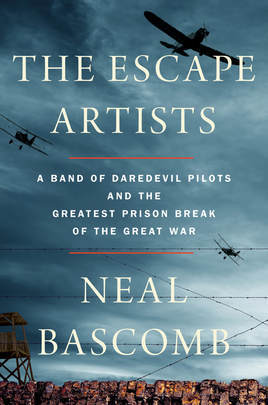 The Escape Artists: A Band of Daredevil Pilots and Greatest Prison Break of the Great War by Neal Bascom is the story of British pilots shot down over German territory and captured,
The Escape Artists: A Band of Daredevil Pilots and Greatest Prison Break of the Great War by Neal Bascom is the story of British pilots shot down over German territory and captured,
then their resolve to escape and get back into the fight.
Digging only with spoons, over nine-months they forged a secret tunnel 60-yards long to escape the Germans' highest-security prison, Holzminden.
The prison was ruled by a brutal camp commandant, Carl Niemayer. Notorious for his temper, he didn't hesitate to have prisoners shot or beaten to death for lesser infractions than trying to escape.
The place was nicknamed "Hellminden" or "Hellhole" by those within its walls.
The photo below shows three organizers of the tunneling operation posed in their escape disguises. From right to left, are Royal Flying Corps pilots Captain Caspar Kennard, Captain David Gray and 2nd Lieutenant Cecil Blain. Photo courtesy Hugh Lowe Despite the risk of discovery and probable execution they found the strength to continue the grueling work for months. Starving and emaciated, disease-ridden and sleep-deprived, inch by inch they carved the tunnel in oxygen-starved darkness, directly under the feet of one hundred armed guards.
Photo courtesy Hugh Lowe Despite the risk of discovery and probable execution they found the strength to continue the grueling work for months. Starving and emaciated, disease-ridden and sleep-deprived, inch by inch they carved the tunnel in oxygen-starved darkness, directly under the feet of one hundred armed guards.
 "There’s one kind of daring that is running out and knowing you might get shot,"
Author Neal Boscom told me. "Then another is digging in the tunnel, going in thirty feet, not knowing if you’re gonna have enough oxygen to breathe, not knowing if you’re gonna get out."
"There’s one kind of daring that is running out and knowing you might get shot,"
Author Neal Boscom told me. "Then another is digging in the tunnel, going in thirty feet, not knowing if you’re gonna have enough oxygen to breathe, not knowing if you’re gonna get out."
Bascom has written nine award-winning books for adults and teens, including Hunting Eichmann, Red Mutiny, The Winter Fortress: The Epic Mission to Sabotage Hitler's Atomic Bomb , and The Perfect Mile: Three Athletes. One Goal. And Less Than Four Minutes to Achieve It.
The Escape Artists is a young adult version of his earlier books The Grand Escape.
Bascom is driven to research and write about people who fascinate him and whose stories will inspire others. " I want know what drove them, what they feared, what stumbling blocks they hit."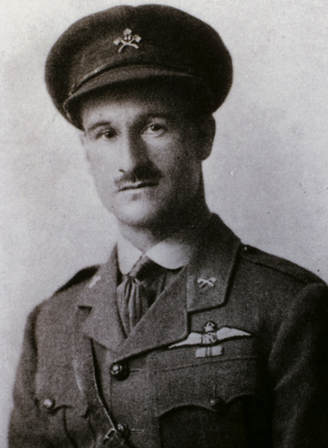 Capt. David Gray, courtesy Patrick Mallahan In The Escape Artists, Bascom focuses on Davy Gray, the leader of the digging operation. Gray tried and failed to escape from five different camps in one year before Holzmiden.
Capt. David Gray, courtesy Patrick Mallahan In The Escape Artists, Bascom focuses on Davy Gray, the leader of the digging operation. Gray tried and failed to escape from five different camps in one year before Holzmiden.
Bascom was struck my the young pilot's determination and motivation for continually trying to escape. "He was driven by wanting to get back to his squadron and back into the fight. Less about being free, less about his own individual drive, but to get back into the fight knowing that he could be shot down again and killed."
The original conspirators had hoped to keep knowledge of the escape plan to a small group, but July 23-24, 1918, twenty-nine officers belly-crawled through the 16-inch high tunnel to freedom. Unfortunately some were recaptured, and just ten made their way to Holland and eventually Britain, including Gray, Kennard and Blain.
Bascom told me there are similar over-arching themes in every book he writes that stem from his teenage years. "I remember to this day sitting in classroom in 8th grade, the teacher wasn’t even talking about history, but she said. 'Never make a decision out of a fear of failure.' Defy the odds and keep going despite the fear of failure."
You can find out about all Neal's thrilling books here: www.nealbascomb.com
The WWI prison break is featured in a new book getting rave reviews and I had the great pleasure of speaking with its author.
 The Escape Artists: A Band of Daredevil Pilots and Greatest Prison Break of the Great War by Neal Bascom is the story of British pilots shot down over German territory and captured,
The Escape Artists: A Band of Daredevil Pilots and Greatest Prison Break of the Great War by Neal Bascom is the story of British pilots shot down over German territory and captured,then their resolve to escape and get back into the fight.
Digging only with spoons, over nine-months they forged a secret tunnel 60-yards long to escape the Germans' highest-security prison, Holzminden.
The prison was ruled by a brutal camp commandant, Carl Niemayer. Notorious for his temper, he didn't hesitate to have prisoners shot or beaten to death for lesser infractions than trying to escape.
The place was nicknamed "Hellminden" or "Hellhole" by those within its walls.
The photo below shows three organizers of the tunneling operation posed in their escape disguises. From right to left, are Royal Flying Corps pilots Captain Caspar Kennard, Captain David Gray and 2nd Lieutenant Cecil Blain.
 Photo courtesy Hugh Lowe Despite the risk of discovery and probable execution they found the strength to continue the grueling work for months. Starving and emaciated, disease-ridden and sleep-deprived, inch by inch they carved the tunnel in oxygen-starved darkness, directly under the feet of one hundred armed guards.
Photo courtesy Hugh Lowe Despite the risk of discovery and probable execution they found the strength to continue the grueling work for months. Starving and emaciated, disease-ridden and sleep-deprived, inch by inch they carved the tunnel in oxygen-starved darkness, directly under the feet of one hundred armed guards.
 "There’s one kind of daring that is running out and knowing you might get shot,"
Author Neal Boscom told me. "Then another is digging in the tunnel, going in thirty feet, not knowing if you’re gonna have enough oxygen to breathe, not knowing if you’re gonna get out."
"There’s one kind of daring that is running out and knowing you might get shot,"
Author Neal Boscom told me. "Then another is digging in the tunnel, going in thirty feet, not knowing if you’re gonna have enough oxygen to breathe, not knowing if you’re gonna get out."
Bascom has written nine award-winning books for adults and teens, including Hunting Eichmann, Red Mutiny, The Winter Fortress: The Epic Mission to Sabotage Hitler's Atomic Bomb , and The Perfect Mile: Three Athletes. One Goal. And Less Than Four Minutes to Achieve It.
The Escape Artists is a young adult version of his earlier books The Grand Escape.
Bascom is driven to research and write about people who fascinate him and whose stories will inspire others. " I want know what drove them, what they feared, what stumbling blocks they hit."
 Capt. David Gray, courtesy Patrick Mallahan In The Escape Artists, Bascom focuses on Davy Gray, the leader of the digging operation. Gray tried and failed to escape from five different camps in one year before Holzmiden.
Capt. David Gray, courtesy Patrick Mallahan In The Escape Artists, Bascom focuses on Davy Gray, the leader of the digging operation. Gray tried and failed to escape from five different camps in one year before Holzmiden.Bascom was struck my the young pilot's determination and motivation for continually trying to escape. "He was driven by wanting to get back to his squadron and back into the fight. Less about being free, less about his own individual drive, but to get back into the fight knowing that he could be shot down again and killed."
The original conspirators had hoped to keep knowledge of the escape plan to a small group, but July 23-24, 1918, twenty-nine officers belly-crawled through the 16-inch high tunnel to freedom. Unfortunately some were recaptured, and just ten made their way to Holland and eventually Britain, including Gray, Kennard and Blain.
Bascom told me there are similar over-arching themes in every book he writes that stem from his teenage years. "I remember to this day sitting in classroom in 8th grade, the teacher wasn’t even talking about history, but she said. 'Never make a decision out of a fear of failure.' Defy the odds and keep going despite the fear of failure."
You can find out about all Neal's thrilling books here: www.nealbascomb.com
Published on November 20, 2018 16:12
November 10, 2018
Scrapbook Preserves a Mother's Anguish
Huge shout out to the Austin Public Library Manchaca Road Branch for inviting me to speak in celebration of Veteran's Day.  Add a shout out to reader Keith Hunter for this Veteran's Day story. He emailed to share new information that surfaced recently about the American POW women featured in my book
PURE GRIT.
Add a shout out to reader Keith Hunter for this Veteran's Day story. He emailed to share new information that surfaced recently about the American POW women featured in my book
PURE GRIT.
The Wisconsin State Historical Society has posted scrapbooks online telling the story of Army Nurse Marcia Gates posted to the Philippines before the start of World War II and later captured POW by the Japanese. The collection of two scrapbooks immediately reveals the desperation and hope of Lieutenant Marcia Gates' mother after the surrender of American forces to the Japanese attack in the Philippines.
The collection of two scrapbooks immediately reveals the desperation and hope of Lieutenant Marcia Gates' mother after the surrender of American forces to the Japanese attack in the Philippines.
Also named Marica Gates, the woman wrote letter after letter in an effort to discover if her daughter was dead or alive. The War Department notified Mrs. Gates that Marcia was missing in action. She sought further information from the government, plus the Red Cross, the San Francisco Press Association, and television station WRG that had received tape recordings of American nurses who had escaped before the surrender. Nobody had any news of her daughter.
The War Department notified Mrs. Gates that Marcia was missing in action. She sought further information from the government, plus the Red Cross, the San Francisco Press Association, and television station WRG that had received tape recordings of American nurses who had escaped before the surrender. Nobody had any news of her daughter.
The family had received a letter from Marcia dated the day of Corregidor's surrender. I can't help but wonder if they believed the lies mixed with the cheerful optimism the young nurse sent to comfort her mother.
"Another short note to remind you again that I am safe and well and will be always, I'm sure. Now you must keep yourself the same. Sure am enjoying my work, plus plenty of food and rest.
The weather where we are now is ideal—evenings cool, days windy and dry. Now don't worry because that would be silly. It anything does happen to me it will to everyone here. Just think, I wanted adventure and I got it."
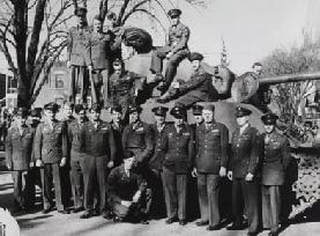 The Japanese attack on the Philippines cut right to the heart of the small town of Janesville, Wisconsin.
The Japanese attack on the Philippines cut right to the heart of the small town of Janesville, Wisconsin.
As well as Army Nurse Marcia Gates, ninety-nine men from the town were serving there. A week prior to the attack A company of the 192 Tank Battalion had arrived at Ft. Stotsenburg and Clark Field.
They became the first American tank unit to engage enemy armor in tank to tank combat during World War II.
Many were kids, some still in high school. Others had been in the National Guard for years, but most had never expected to see actual combat. Those who survived the fighting, faced the Bataan Death March and the horrors of prison camp until the end of the war. Known as the Janesville 99, only 35 of the men survived to come home.
Twenty of the survivors are pictured at left. The second Gates scrapbook documents Marcia's joyous homecoming as well as that of the Janesville men who survived the war. Army Nurse Alice Hahn was from nearby Cleveland Wisconsin.
The second Gates scrapbook documents Marcia's joyous homecoming as well as that of the Janesville men who survived the war. Army Nurse Alice Hahn was from nearby Cleveland Wisconsin.
You can see the scrapbooks here...
And more about the Janesville 99 here...
 Add a shout out to reader Keith Hunter for this Veteran's Day story. He emailed to share new information that surfaced recently about the American POW women featured in my book
PURE GRIT.
Add a shout out to reader Keith Hunter for this Veteran's Day story. He emailed to share new information that surfaced recently about the American POW women featured in my book
PURE GRIT.
The Wisconsin State Historical Society has posted scrapbooks online telling the story of Army Nurse Marcia Gates posted to the Philippines before the start of World War II and later captured POW by the Japanese.
 The collection of two scrapbooks immediately reveals the desperation and hope of Lieutenant Marcia Gates' mother after the surrender of American forces to the Japanese attack in the Philippines.
The collection of two scrapbooks immediately reveals the desperation and hope of Lieutenant Marcia Gates' mother after the surrender of American forces to the Japanese attack in the Philippines.Also named Marica Gates, the woman wrote letter after letter in an effort to discover if her daughter was dead or alive.
 The War Department notified Mrs. Gates that Marcia was missing in action. She sought further information from the government, plus the Red Cross, the San Francisco Press Association, and television station WRG that had received tape recordings of American nurses who had escaped before the surrender. Nobody had any news of her daughter.
The War Department notified Mrs. Gates that Marcia was missing in action. She sought further information from the government, plus the Red Cross, the San Francisco Press Association, and television station WRG that had received tape recordings of American nurses who had escaped before the surrender. Nobody had any news of her daughter.The family had received a letter from Marcia dated the day of Corregidor's surrender. I can't help but wonder if they believed the lies mixed with the cheerful optimism the young nurse sent to comfort her mother.
"Another short note to remind you again that I am safe and well and will be always, I'm sure. Now you must keep yourself the same. Sure am enjoying my work, plus plenty of food and rest.
The weather where we are now is ideal—evenings cool, days windy and dry. Now don't worry because that would be silly. It anything does happen to me it will to everyone here. Just think, I wanted adventure and I got it."

 The Japanese attack on the Philippines cut right to the heart of the small town of Janesville, Wisconsin.
The Japanese attack on the Philippines cut right to the heart of the small town of Janesville, Wisconsin.As well as Army Nurse Marcia Gates, ninety-nine men from the town were serving there. A week prior to the attack A company of the 192 Tank Battalion had arrived at Ft. Stotsenburg and Clark Field.
They became the first American tank unit to engage enemy armor in tank to tank combat during World War II.
Many were kids, some still in high school. Others had been in the National Guard for years, but most had never expected to see actual combat. Those who survived the fighting, faced the Bataan Death March and the horrors of prison camp until the end of the war. Known as the Janesville 99, only 35 of the men survived to come home.
Twenty of the survivors are pictured at left.
 The second Gates scrapbook documents Marcia's joyous homecoming as well as that of the Janesville men who survived the war. Army Nurse Alice Hahn was from nearby Cleveland Wisconsin.
The second Gates scrapbook documents Marcia's joyous homecoming as well as that of the Janesville men who survived the war. Army Nurse Alice Hahn was from nearby Cleveland Wisconsin.You can see the scrapbooks here...
And more about the Janesville 99 here...
Published on November 10, 2018 12:41
October 7, 2018
Martha Mitchell/Christine Blasey Ford ~ What's Changed in 50 years?
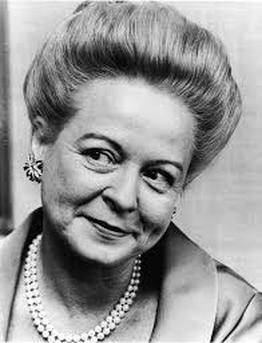 In the Nixon Era, Republicans discounted Martha Mitchell's accusations, saying she was mentally unstable. Her attacker got promoted and President Trump recently promoted him again.
In the Nixon Era, Republicans discounted Martha Mitchell's accusations, saying she was mentally unstable. Her attacker got promoted and President Trump recently promoted him again.In voting to confirm Judge Brett M. Kavanaugh to the Supreme Court, the swing voters said the same thing about Christine Blasey Ford. They just used more subtle phrasing. They implied she had been so traumatized she couldn't tell what was real and what was not.
Nothing has changed but the excuses people use to justify discounting women's stories, and the science that would support them. Richard Huganir, a neuroscientist at Johns Hopkins School of Medicine says trauma would only help a woman remember an attack more clearly.
“The person lying on top of you — who she’d previously met — you’re not going to forget that,” he told the Washington Post. “There’s a total consensus in the field of memory ... If anything, fear and trauma enhances the encoding of the memory at a molecular level." It's the reason people never forget details of where they were on 9/11, or the day President John F. Kennedy was shot.
Martha and John Mitchell came to the white house from Arkansas in President Richard Nixon's first term, he as attorney general. She publicly and loudly supported the president for a second term as her husband took over the president's re-election campaign.
 Martha & husband John Mitchell, attorney general in the Richard Nixon administration.
Martha & husband John Mitchell, attorney general in the Richard Nixon administration.

But then Martha began to suspect Nixon's men were up to "dirty tricks." She listened in on her husband's meetings with Nixon, and concluded members of the campaign were acting illegally.
Martha had always spoken her mind; the press had dubbed her "mouth from the south."
She complained about the label, which wasn’t applied to men in Washington. “Why do they always call me outspoken? Can’t they just say I’m frank?” She asked. The name calling got worse.
The night arrests in the Watergate break-in hit the news, Martha called reporter Helen Thomas of United Press International to say she thought her husband and the president were somehow involved.
The phone call was suddenly cut short. According to Thomas, “…it appeared someone took away the phone from her hand." She heard Martha say, ‘You just get away.’” Thomas said she called back and the hotel operator told her, “Mrs. Mitchell is indisposed and cannot talk.”
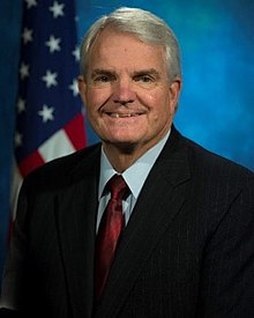 Martha later charged an FBI agent named Stephen King ripped the phone from her hands and subsequently threw her down and kicked her to keep her from making any phone calls. She says under orders from her husband she was locked in her room incommunicado for 24-hours. She was given alcohol, but no food.
Martha later charged an FBI agent named Stephen King ripped the phone from her hands and subsequently threw her down and kicked her to keep her from making any phone calls. She says under orders from her husband she was locked in her room incommunicado for 24-hours. She was given alcohol, but no food.This seems like a good point in the story to introduce Stephen King (shown at left). After Nixon was re-elected in 1972, King left the FBI for private industry. Then last year, he was appointed Ambassador to the Czech Republic by Donald Trump.
During his confirmation hearings, no questions came up about allegations he helped in the Watergate cover-up, or that he assaulted a woman to that end.
Martha Mitchell claimed King held her prisoner despite a number of escape attempts. When she tried to exit through a glass door they got into a tussle that broke the glass and her hand was cut so badly she required six stitches.
Martha said a doctor was finally summoned to aide King in keeping her a prisoner. King forced Martha onto the bed and held her down while the doctor removed her pants and gave her a shot of tranquilizer.
A reporter who spoke with Martha after she was released described her as “a beaten woman,” with “incredible" black and blue marks on her arms.
As Nixon fought for his office and reputation, his administration briefed the press about the Martha's lack of credibility. She was portrayed as a paranoid, publicity-seeking and, possibly alcoholic, housewife. Rumors spread that she had been institutionalized for insanity.

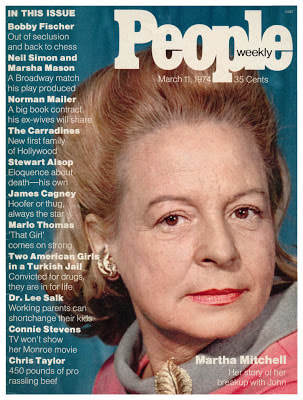
Martha wanted Nixon to fire Steve King, but the agent was promoted to chief of security. After leaving the FBI he went on to a lucrative career in chemical manufacturing.
Arriving in Prague, last December, to take up duties as Trump's Ambassador to the Czech Republic, King told Radio Free Europe reporters, "I was there when this matter occurred [with Martha Mitchell]....But I have chosen -- then and now -- not to really speak to it specifically only out of respect to the Mitchell family, those that survive today."
Nixon himself said, “If it hadn’t been for Martha Mitchell, there’d have been no Watergate [scandal].” Scandal, he means. But by the time he resigned in August of 1974, Martha's marriage had crumbled, she appeared to have possibly had an emotional breakdown and had suffered embarrassing publicity.
So far, the only justice for Martha has been in the form of recognition by the mental health community. Harvard psychologist Brendan Maher encountered mental patients incorrectly diagnosed as being delusional, when it turned out their "delusions" were true. He named this the Martha Mitchell Effect. The effect is not a mental problem of the patient, but a mental block on the part of the psychiatrist.
Seems like today we have a mental block on the part of half the senators in Washington.
Thanks to YA Author Jody Casella for telling me about Martha Mitchell. Another courageous woman whose story I had not known.
Published on October 07, 2018 00:00
July 4, 2018
The Power Of Love Stands Against Hate
I've got a terrific love story for you today, but first, exciting news.
Advanced Review Copies of Standing Up Against Hate arrived! Known in the biz as ARCs, these are cheap, paperback, uncorrected proofs of the book, which comes out in January.
 From the book jacket: "
Standing Up Against Hate
offers a much-need perspective on the lives of women of color during wartime America." Marcia M. Anderson, U.S. Army (Ret.)
From the book jacket: "
Standing Up Against Hate
offers a much-need perspective on the lives of women of color during wartime America." Marcia M. Anderson, U.S. Army (Ret.)
It tells the stories of African American women who enlisted in the newly formed Women’s Army Auxiliary Corps (WAAC) in World War II. They faced as many obstacles in the armed forces as they did in everyday life, but they survived racial prejudice and discrimination with dignity, succeeded in jobs women had never worked before, and made crucial contributions to the military war effort. The Power of Love Stands Against Hate Elinor Powell (right) with a fellow nurse at POW Camp Florence in Arizona, circa 1944-1945.
Elinor Powell (right) with a fellow nurse at POW Camp Florence in Arizona, circa 1944-1945.
Today's featured story is about an African American woman who served in the Army Nurse Corps. She had the extraordinary courage to stand against hate in the most personal way, all day every day.
Elinor Powell fell in love with a German POW and chose him, for better or worse, knowing their interracial marriage was against the law in 29 states.
Elinor grew up near Boston, in a small town that was integrated. She played with white children, went to school with them and never saw a drinking fountain labeled “White’s Only”. (Photo courtesy Smithsonian Magazine and Chris Albert)
When America called for nurses during WWII, Elinor wanted to serve her country.
But the segregated Army Nurse Corps came as quite a shock. Elinor deployed to Camp Florence, near Phoenix, Arizona, where her army uniform did not exempt her from Jim Crow laws.
Off base, Elinor was refused service at a Woolworth's lunch counter. On base, she suffered further indignity, forced to tend German POWs, soldiers from the army gobbling up territory to expand Hitler’s white supremacist regime.
Some POWs called the black nurses derogatory names, and the U.S. Army wasn't a whole lot better. There was a shortage of nurses to treat American wounded, but hundreds of black nurses were turned away. Elinor wanted to use her skills to aid men who'd been wounded fighting the Nazis. The Army posted her to the Arizona desert at a hospital for German POWs that rarely needed medical care.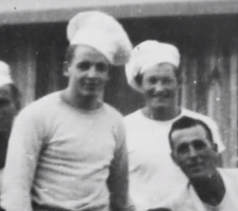 One day, Elinor walked into the mess hall for a meal and was approached by one of the German men. Frederick Albert was a baker in the kitchen and when he saw Elinor, it was love at first sight. He walked up and introduced himself.
"You should know my name. I'm the man who's going to marry you."
One day, Elinor walked into the mess hall for a meal and was approached by one of the German men. Frederick Albert was a baker in the kitchen and when he saw Elinor, it was love at first sight. He walked up and introduced himself.
"You should know my name. I'm the man who's going to marry you."
I imagine Elinor wasn't moved at the moment, she may even have suspected she was the butt of a joke. But Frederick didn't hold with Nazi doctrine. Like many German soldiers, he'd been drafted and forced to serve in the military. And he was a persistent man.
He volunteered to work at the hospital. He organized baking classes and Elinor attended. She saw that he was kind and he made her feel desirable. Soon they were meeting in secret. Enemies in love.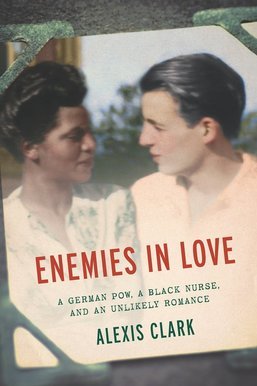 Their love story is told in a new book by Alexis Clark. It's not all sunshine and roses. Fredrick was caught sneaking our of Elinor's barracks and punished with a beating. Not because he was a POW consorting with an American, because he was a white man dating a black woman.
Their love story is told in a new book by Alexis Clark. It's not all sunshine and roses. Fredrick was caught sneaking our of Elinor's barracks and punished with a beating. Not because he was a POW consorting with an American, because he was a white man dating a black woman.
According to the publisher, Enemies in Love " paints a tableau of dreams deferred and of love struggling to survive, twenty-five years before the Supreme Court's Loving decision legalizing mixed-race marriage—revealing the surprising possibilities for human connection in one of history’s most violent conflicts."
You could understand how this romance might fade away when the war ended and Frederick was shipped home to German. But these two concocted a daring plan. They got pregnant, hoping that would help Frederick get a visa to come back to the States.
Elinor hid her pregnancy until she was discharged from the Army, then went home to her proper family in her proper New England town. Her mother wasn't happy. Honestly, I can't blame her for thinking her daughter was being duped by a cad who might never return, and if he did, might just want a green card, not a biracial family.
But Frederick was true. He got permission to return to the U.S. and the couple married. Initially, they moved to Germany settling with Frederick's wealthy family where he was poised to take over his father's engineering company.
But Frederick's mother wouldn't accept her African American daughter-in-law, and treated her rudely. The townspeople didn't take to Elinor, either. Author Alexis Clark told NPR, "People were pointing, taunting her when she was walking down the street. She remembers that a man dropped his groceries when he saw her and the fruit just rolled down the lane. He couldn't believe it! She said she felt like an animal in a zoo.
And so the family moved back to New England, where their troubles continued.
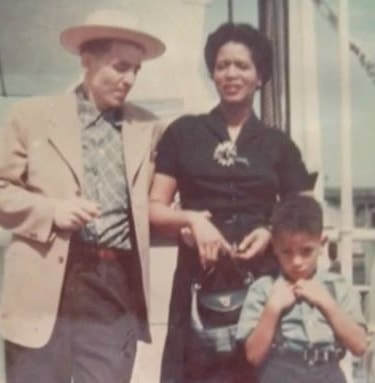 Frederick and Elinor Albert & son, Chris. Courtesy Soledad O'Brien, Matter of Fact Frederick had trouble finding jobs because he was German. They had trouble finding a place to live because Elinor was black.
Frederick and Elinor Albert & son, Chris. Courtesy Soledad O'Brien, Matter of Fact Frederick had trouble finding jobs because he was German. They had trouble finding a place to live because Elinor was black.
But their love persevered.
Eventually, they discovered a place where people had consciously chosen to live in an integrated community. They made a home in South Norwalk, Connecticut, where a diversity of mixed-race couples, Jewish families, gays and other misfits of post-war America were welcome.
Pepperidge Farms baking company was located in Norwalk, and I knew there was a reason I love those cookies! The company, founded by a woman during the Depression, hired Frederick as a baker.
Advanced Review Copies of Standing Up Against Hate arrived! Known in the biz as ARCs, these are cheap, paperback, uncorrected proofs of the book, which comes out in January.
 From the book jacket: "
Standing Up Against Hate
offers a much-need perspective on the lives of women of color during wartime America." Marcia M. Anderson, U.S. Army (Ret.)
From the book jacket: "
Standing Up Against Hate
offers a much-need perspective on the lives of women of color during wartime America." Marcia M. Anderson, U.S. Army (Ret.) It tells the stories of African American women who enlisted in the newly formed Women’s Army Auxiliary Corps (WAAC) in World War II. They faced as many obstacles in the armed forces as they did in everyday life, but they survived racial prejudice and discrimination with dignity, succeeded in jobs women had never worked before, and made crucial contributions to the military war effort. The Power of Love Stands Against Hate
 Elinor Powell (right) with a fellow nurse at POW Camp Florence in Arizona, circa 1944-1945.
Elinor Powell (right) with a fellow nurse at POW Camp Florence in Arizona, circa 1944-1945. Today's featured story is about an African American woman who served in the Army Nurse Corps. She had the extraordinary courage to stand against hate in the most personal way, all day every day.
Elinor Powell fell in love with a German POW and chose him, for better or worse, knowing their interracial marriage was against the law in 29 states.
Elinor grew up near Boston, in a small town that was integrated. She played with white children, went to school with them and never saw a drinking fountain labeled “White’s Only”. (Photo courtesy Smithsonian Magazine and Chris Albert)
When America called for nurses during WWII, Elinor wanted to serve her country.
But the segregated Army Nurse Corps came as quite a shock. Elinor deployed to Camp Florence, near Phoenix, Arizona, where her army uniform did not exempt her from Jim Crow laws.
Off base, Elinor was refused service at a Woolworth's lunch counter. On base, she suffered further indignity, forced to tend German POWs, soldiers from the army gobbling up territory to expand Hitler’s white supremacist regime.
Some POWs called the black nurses derogatory names, and the U.S. Army wasn't a whole lot better. There was a shortage of nurses to treat American wounded, but hundreds of black nurses were turned away. Elinor wanted to use her skills to aid men who'd been wounded fighting the Nazis. The Army posted her to the Arizona desert at a hospital for German POWs that rarely needed medical care.
 One day, Elinor walked into the mess hall for a meal and was approached by one of the German men. Frederick Albert was a baker in the kitchen and when he saw Elinor, it was love at first sight. He walked up and introduced himself.
"You should know my name. I'm the man who's going to marry you."
One day, Elinor walked into the mess hall for a meal and was approached by one of the German men. Frederick Albert was a baker in the kitchen and when he saw Elinor, it was love at first sight. He walked up and introduced himself.
"You should know my name. I'm the man who's going to marry you."
I imagine Elinor wasn't moved at the moment, she may even have suspected she was the butt of a joke. But Frederick didn't hold with Nazi doctrine. Like many German soldiers, he'd been drafted and forced to serve in the military. And he was a persistent man.
He volunteered to work at the hospital. He organized baking classes and Elinor attended. She saw that he was kind and he made her feel desirable. Soon they were meeting in secret. Enemies in love.
 Their love story is told in a new book by Alexis Clark. It's not all sunshine and roses. Fredrick was caught sneaking our of Elinor's barracks and punished with a beating. Not because he was a POW consorting with an American, because he was a white man dating a black woman.
Their love story is told in a new book by Alexis Clark. It's not all sunshine and roses. Fredrick was caught sneaking our of Elinor's barracks and punished with a beating. Not because he was a POW consorting with an American, because he was a white man dating a black woman.According to the publisher, Enemies in Love " paints a tableau of dreams deferred and of love struggling to survive, twenty-five years before the Supreme Court's Loving decision legalizing mixed-race marriage—revealing the surprising possibilities for human connection in one of history’s most violent conflicts."
You could understand how this romance might fade away when the war ended and Frederick was shipped home to German. But these two concocted a daring plan. They got pregnant, hoping that would help Frederick get a visa to come back to the States.
Elinor hid her pregnancy until she was discharged from the Army, then went home to her proper family in her proper New England town. Her mother wasn't happy. Honestly, I can't blame her for thinking her daughter was being duped by a cad who might never return, and if he did, might just want a green card, not a biracial family.
But Frederick was true. He got permission to return to the U.S. and the couple married. Initially, they moved to Germany settling with Frederick's wealthy family where he was poised to take over his father's engineering company.
But Frederick's mother wouldn't accept her African American daughter-in-law, and treated her rudely. The townspeople didn't take to Elinor, either. Author Alexis Clark told NPR, "People were pointing, taunting her when she was walking down the street. She remembers that a man dropped his groceries when he saw her and the fruit just rolled down the lane. He couldn't believe it! She said she felt like an animal in a zoo.
And so the family moved back to New England, where their troubles continued.
 Frederick and Elinor Albert & son, Chris. Courtesy Soledad O'Brien, Matter of Fact Frederick had trouble finding jobs because he was German. They had trouble finding a place to live because Elinor was black.
Frederick and Elinor Albert & son, Chris. Courtesy Soledad O'Brien, Matter of Fact Frederick had trouble finding jobs because he was German. They had trouble finding a place to live because Elinor was black.But their love persevered.
Eventually, they discovered a place where people had consciously chosen to live in an integrated community. They made a home in South Norwalk, Connecticut, where a diversity of mixed-race couples, Jewish families, gays and other misfits of post-war America were welcome.
Pepperidge Farms baking company was located in Norwalk, and I knew there was a reason I love those cookies! The company, founded by a woman during the Depression, hired Frederick as a baker.
Published on July 04, 2018 12:45
May 4, 2018
Affair? Riot? Massacre? What would you call it?

This day in history, May 4, 1886, saw possibly the most significant event in American labor history: Haymarket. Controversy churns over the details even now some 130 years later.
In schools across the U.S. our kids are taught that anarchists, socialist and communists rioted that day. Haymarket Riot is the answer to a question on the Advanced Placement U.S. History exam.
Socialist and Communists--the ultimate enemies of American ideals, and yet, what these workers wanted was simply to lay down their tools at five o'clock, go home and have dinner with their families. Sixty hour workweeks were the norm.
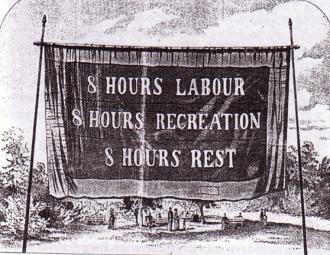 This was a case of labeling, the type still prevalent in America that allows us to immediately discount a group of people and their concerns. As you know, the words we choose to describe what we see are not idle, they determine what we see.
This was a case of labeling, the type still prevalent in America that allows us to immediately discount a group of people and their concerns. As you know, the words we choose to describe what we see are not idle, they determine what we see.
One award-winning curriculum developer offers teachers a lesson plan on the Haymarket that asks students to "read like a detective" to gain a clear understanding of a newspaper article published the following day by the Chicago Hearld.
Only this one source is offered on the subject and the event is called a riot by teachers following this guide. At the time, there were numerous English newspapers in Chicago, as well as German and Irish newspapers that would have reported on this event, many of the striking workers were German and Irish immigrants.
 What happened in Haymarket, a public market square in Chicago, stemmed from a labor strike that started on May Day. More than 350-thousand workers across the country joined in demanding an 8-hour workday.
What happened in Haymarket, a public market square in Chicago, stemmed from a labor strike that started on May Day. More than 350-thousand workers across the country joined in demanding an 8-hour workday.Among them were machinists at Chicago's McCormick Reaper Company. They built a piece of farm machinery which had replaced scythes for cutting crops. Imagine how vastly the reaper improved farmers' productivity and increased the food supply for all Americans.
McCormick locked out the striking workers and hired new men to take their jobs. When strikers gathered outside the plant to protest violence broke out between strikers, strikebreakers and police. It's unclear how many people were injured, at least one was killed.
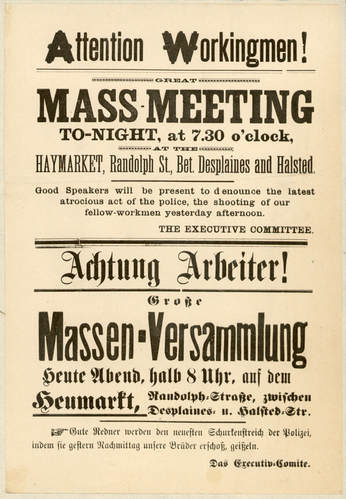 What we do know is that workers planned a meeting to protest police brutality the next day in Haymarket Square.
What we do know is that workers planned a meeting to protest police brutality the next day in Haymarket Square.Some fifteen hundred people showed up and protested peacefully. After most of the crowd had gone home, police marched out in force to disburse the remaining crowd.
Suddenly a pipe bomb exploded among police ranks panicking everyone. Police opened fire on the crowd.
The bomb killed seven policemen. At least four civilians were shot and more than sixty demonstrators injured. A frenzy swept Chicago that night as police rounded up labor leaders and suspected radicals. In addition they arrested hundreds of workers, many of whom were interrogated and beaten.
No evidence ever identified who threw the bomb. Eight men stood trial, four hanged. Historians still debate the accuracy of the charges and fairness of the trial. The Haymarket Affair delayed the 8-hour day and kindled xenophobia against radicals and immigrants that haunted labor unions for decades and continues in America today.
Our kids are taught that this protest against police brutality, this strike for the eight-hour workday, was a riot by workers. To make sense of political issues today like "the right to work," "Obama Care," and immigration. Kids need to know American labor history.
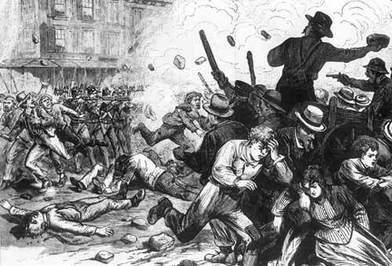 1877 clash between workers and Maryland Sixth Regiment, which the governor deployed on behalf of the railroad company. The Library of Congress puts out curriculum aides for teachers on all sorts of history topics. You may or may not be shocked at the wording of their labor history lesson.
1877 clash between workers and Maryland Sixth Regiment, which the governor deployed on behalf of the railroad company. The Library of Congress puts out curriculum aides for teachers on all sorts of history topics. You may or may not be shocked at the wording of their labor history lesson."One especially significant labor upheaval was the Great Railroad Strike of 1877.
Wage cuts in the railroad industry led to the strike, which began in West Virginia and spread to three additional states over a period of 45 days before being violently ended by a combination of vigilantes, National Guardsmen, and federal troops.
Similar episodes occurred more frequently in the following decades as workers organized and asserted themselves against perceived injustices."
Will you do one thing today to help America's kids learn a balanced view of our labor history?
Click here for a round-up of great books for kids on the topic. Then call your public library and ask them to stock one or two of them. Better yet, purchase one and donate it to your local school. Thanks so much!
Published on May 04, 2018 08:48
April 3, 2018
"I Have Bad News For You..."
 When facing news of the worst kind, we hope for the courage to see beyond our pain and grief to something larger we can believe in, something enduring to hold us up and carry us onward.
When facing news of the worst kind, we hope for the courage to see beyond our pain and grief to something larger we can believe in, something enduring to hold us up and carry us onward.A new book for teens highlights the moment Senator Bobby Kennedy delivered the awful news of Martin Luther King Jr.'s assassination to a crowd of African Americans.
In that terrible moment, Kennedy faced the specter of violence and hate with vulnerability. His courage to reach beyond differences and find common ground in pain and grief touched people profoundly.
Kennedy was running for president, scheduled for a campaign rally in a black neighborhood of Indianapolis. News of MLK’s death sparked violence across the country. The mayor said it was too dangerous for Kennedy to speak. Police refused to escort him to the scene.
There was no social media or 24-hours news coverage in 1968. Arriving at the rally, Kennedy realized the clamoring crowd did not know King had been shot.
Claire Rudolf Murphy is the author of Martin and Bobby: A Journey Toward Justice. The book is not due out until August, but it is available for pre-order now here...to mark the 50th year since King's death, she is joining us here on the blog to give you a sneak peak at the book, and share how she came to write it.
 Claire:
Claire:On April 4, 1968 Senator Robert Kennedy spoke at a campaign rally in a black neighborhood in Indianapolis. But instead of telling the crowd why they should vote for him for president, he had to announce that violence had struck again.
“I have sad news for you, sad news for all of our fellow citizens, and people who love peace all over the world . . . Martin Luther King was shot and killed tonight in Memphis, Tennessee.”
Riots had already erupted in cities across the country. But that night in Indianapolis the crowd stood quietly in silent grief because Bobby Kennedy didn’t talk to them like a politician. He shared that he had lost a family member, too, addressing them as people who also knew the pain of great loss.
Earlier in the 1960s, King and Bobby Kennedy, as attorney general under his brother President John F. Kennedy, had challenged and tested each other as wary allies in the fight for civil rights.
 Graffiti from People's Campaign But by the spring of 1968, as Kennedy began his campaign for the presidency and King made final plans for the Poor People’s Campaign in Washington, D. C., they had arrived in the same place. Both men declared often and publicly that Americans had a moral imperative to end the war in Vietnam and address poverty and racism.
Graffiti from People's Campaign But by the spring of 1968, as Kennedy began his campaign for the presidency and King made final plans for the Poor People’s Campaign in Washington, D. C., they had arrived in the same place. Both men declared often and publicly that Americans had a moral imperative to end the war in Vietnam and address poverty and racism. I knew nothing about Bobby’s April 4th speech until one evening several years ago when my mother, husband and I watched the documentary “A Ripple of Hope” about Robert Kennedy. Today Bobby’s speech is available on You Tube and often referenced in articles about King’s assassination. But in 1968 regional events were only broadcast on TV local stations.
 Author Claire Rudolf Murphy Watching Bobby’s speech for the first time in 2012 I was awed by the beauty of his words, and the sorrow in his voice that touched the crowd so deeply. I had to learn more. I wanted to understand how and why Kennedy had such courage and was able to give such a powerful, healing speech on one of the worst days in America’s history. I had written children’s books for many years and decided that day that I wanted to share with teen readers’ Bobby’s speech and his relationship with Dr. King.
Author Claire Rudolf Murphy Watching Bobby’s speech for the first time in 2012 I was awed by the beauty of his words, and the sorrow in his voice that touched the crowd so deeply. I had to learn more. I wanted to understand how and why Kennedy had such courage and was able to give such a powerful, healing speech on one of the worst days in America’s history. I had written children’s books for many years and decided that day that I wanted to share with teen readers’ Bobby’s speech and his relationship with Dr. King.During the many years of researching and writing this book, I got lost often in the events of the sixties, and my own personal history since I was 17 in 1968. The epilogue was the most difficult to write. Fifty years later, income disparity has grown even greater, poverty continues to place its heavy burden on families and communities, and divisive political rhetoric divides our country. The words of Martin and Bobby still offer inspiration and insight on how to face the historic challenges of economic and racial inequality. But we need that same inspiration and call to action from our leaders today.
However, the young activists give me hope. I also know it is time for me and other concerned Americans of all ages to raise our voices, so that the lives of King and Kennedy, and all those who have died protesting for change, are not forgotten.
Martin and Bobby: A Journey Towards Justice will be published By Chicago Review Press in October 2018. Listen to KPBX Public Radio interview Claire about King and Kennedy here...
Published on April 03, 2018 16:11
January 30, 2018
How Spielberg Skims The Surface
The Post. Have you seen it yet?
It's a great movie for a news junkie like me. And freedom of the press is a timely topic, as is women making their voices heard.
But like most Hollywood movies based on true events, a lot of the story gets left out. The Spielberg movie starring Meyrl Streep and Tom Hanks tells the story of The Post's Katharine Graham's decision about whether to publish the Pentagon Papers in 1971. She knew she could face prison and financial ruin.
The Spielberg movie starring Meyrl Streep and Tom Hanks tells the story of The Post's Katharine Graham's decision about whether to publish the Pentagon Papers in 1971. She knew she could face prison and financial ruin.
The New York Times had already scooped The Post, but a federal injunction barred the newspaper from continuing to publish the top secret documents proving four U.S. presidents had lied about the U.S. policy in Vietnam.
Rarely in those times did a woman own and run a newspaper, but for dramatic appeal, the movie makes Katharine appear inexperienced and weak-kneed. To be sure, she was a well-known society woman, but Katharine had been running the company for eight years by 1971.
She'd had keen interest in the news business from a young age and worked as a journalist in San Francisco before becoming a wife and mother.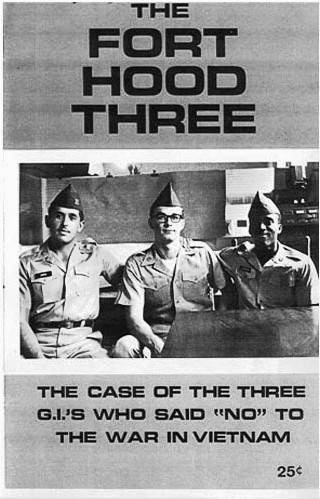 A more important and major fact glossed over in the movie, is that the Pentagon Papers were not the first evidence that the government was lying about the Vietnam War. The soldiers on the ground were some of the first to make these accusations, and the major news sources did not make it a priority to investigate.
A more important and major fact glossed over in the movie, is that the Pentagon Papers were not the first evidence that the government was lying about the Vietnam War. The soldiers on the ground were some of the first to make these accusations, and the major news sources did not make it a priority to investigate.
In 1966, three soldiers, U.S. Army Privates David Samas and Dennis Mora, and Private First Class James A. Johnson refused orders to ship out to Vietnam saying:
“We have been in the army long enough to know that we are not the only G.I.’s who feel as we do. Large numbers of men in the service do not understand this war or are against it.
No one uses the word ‘winning’ anymore because in Vietnam it has no meaning. Our officers just talk about five or ten more years of war with at least half-million of our boys thrown into the grinder.”
They came to be known as The Fort Hood Three , and they stood firm even as they faced court marital and went to prison. Family members of Fort Hood Three demonstrate against the war, July 9, 1966. Released from military prison three years later, Samas, Mora and Johnson found little had changed in Vietnam. But hundreds of their comrades, active-duty service members had joined the anti-war movement by the late 1960's.
Family members of Fort Hood Three demonstrate against the war, July 9, 1966. Released from military prison three years later, Samas, Mora and Johnson found little had changed in Vietnam. But hundreds of their comrades, active-duty service members had joined the anti-war movement by the late 1960's.
During the Vietnam war years, 1966 and 1971, more than five-hundred thousand U.S. military servicemen deserted the armed forces. In unprecedented numbers, entire units refused to go into battle. Soldiers and veterans published more than 200 underground anti-war newspapers presenting abundant evidence of government deceit.
One mainstream journalist talked to hundreds of U.S. troops in Vietnam and became convinced the government was lying about the war. He wrote to Senate Foreign Relations Committee Chairman J. William Fulbright.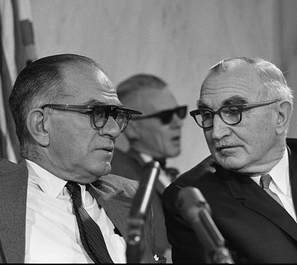 Senator J. William Fulbright shown with Senator Wayne Morse during the hearings.
Senator J. William Fulbright shown with Senator Wayne Morse during the hearings.
Fulbright launched hearings in February 1966 that included retired generals and respected foreign policy men. CBS television interrupted regular programming to air these hearings live, and the nation tuned in. People started to see through the screen of deception.
Until... CBS caved to pressure from President Lyndon Johnson. Also, the network, didn't want to lose money by preempting afternoon soap operas, cementing the decision to stop
broadcasting the hearings. That was five years before Katherine Graham came under heat from Defense Secretary Robert McNamara over the Pentagon Papers. The real Katherine Graham and Post Executive Editor Ben Bradlee leave US District Court in Washington in 1971.
The real Katherine Graham and Post Executive Editor Ben Bradlee leave US District Court in Washington in 1971.
The Post is getting great reviews, and I recommend it as good entertainment that raises issues very relevant today. Of course, we can't depend on Hollywood movies to teach history, but I am now inspired to watch the documentary film about Daniel Ellsberg and the Pentagon Papers, for a more complete understanding. Click below to watch the trailer.
 I also recommend a recent book on the subject for teens,
Most Dangerous: Daniel Ellsberg and the Secret History of the Vietnam War
written by acclaimed author
Steve Sheinkin.
I also recommend a recent book on the subject for teens,
Most Dangerous: Daniel Ellsberg and the Secret History of the Vietnam War
written by acclaimed author
Steve Sheinkin.
The book received five starred reviews, and according to Kirkus Reviews, the book's "l ively, detailed prose rooted in a tremendous amount of research, fully documented. . . Easily the best study of the Vietnam War available for teen readers.”
In addition, if you know a history teacher, let them know about this role playing activity that helps students understand the issues that led to the Vietnam War.
Next up, I'm hoping to see Murder on the Orient Express for some escapist entertainment.
It's a great movie for a news junkie like me. And freedom of the press is a timely topic, as is women making their voices heard.
But like most Hollywood movies based on true events, a lot of the story gets left out.
 The Spielberg movie starring Meyrl Streep and Tom Hanks tells the story of The Post's Katharine Graham's decision about whether to publish the Pentagon Papers in 1971. She knew she could face prison and financial ruin.
The Spielberg movie starring Meyrl Streep and Tom Hanks tells the story of The Post's Katharine Graham's decision about whether to publish the Pentagon Papers in 1971. She knew she could face prison and financial ruin.The New York Times had already scooped The Post, but a federal injunction barred the newspaper from continuing to publish the top secret documents proving four U.S. presidents had lied about the U.S. policy in Vietnam.
Rarely in those times did a woman own and run a newspaper, but for dramatic appeal, the movie makes Katharine appear inexperienced and weak-kneed. To be sure, she was a well-known society woman, but Katharine had been running the company for eight years by 1971.
She'd had keen interest in the news business from a young age and worked as a journalist in San Francisco before becoming a wife and mother.
 A more important and major fact glossed over in the movie, is that the Pentagon Papers were not the first evidence that the government was lying about the Vietnam War. The soldiers on the ground were some of the first to make these accusations, and the major news sources did not make it a priority to investigate.
A more important and major fact glossed over in the movie, is that the Pentagon Papers were not the first evidence that the government was lying about the Vietnam War. The soldiers on the ground were some of the first to make these accusations, and the major news sources did not make it a priority to investigate.In 1966, three soldiers, U.S. Army Privates David Samas and Dennis Mora, and Private First Class James A. Johnson refused orders to ship out to Vietnam saying:
“We have been in the army long enough to know that we are not the only G.I.’s who feel as we do. Large numbers of men in the service do not understand this war or are against it.
No one uses the word ‘winning’ anymore because in Vietnam it has no meaning. Our officers just talk about five or ten more years of war with at least half-million of our boys thrown into the grinder.”
They came to be known as The Fort Hood Three , and they stood firm even as they faced court marital and went to prison.
 Family members of Fort Hood Three demonstrate against the war, July 9, 1966. Released from military prison three years later, Samas, Mora and Johnson found little had changed in Vietnam. But hundreds of their comrades, active-duty service members had joined the anti-war movement by the late 1960's.
Family members of Fort Hood Three demonstrate against the war, July 9, 1966. Released from military prison three years later, Samas, Mora and Johnson found little had changed in Vietnam. But hundreds of their comrades, active-duty service members had joined the anti-war movement by the late 1960's.During the Vietnam war years, 1966 and 1971, more than five-hundred thousand U.S. military servicemen deserted the armed forces. In unprecedented numbers, entire units refused to go into battle. Soldiers and veterans published more than 200 underground anti-war newspapers presenting abundant evidence of government deceit.
One mainstream journalist talked to hundreds of U.S. troops in Vietnam and became convinced the government was lying about the war. He wrote to Senate Foreign Relations Committee Chairman J. William Fulbright.
 Senator J. William Fulbright shown with Senator Wayne Morse during the hearings.
Senator J. William Fulbright shown with Senator Wayne Morse during the hearings. Fulbright launched hearings in February 1966 that included retired generals and respected foreign policy men. CBS television interrupted regular programming to air these hearings live, and the nation tuned in. People started to see through the screen of deception.
Until... CBS caved to pressure from President Lyndon Johnson. Also, the network, didn't want to lose money by preempting afternoon soap operas, cementing the decision to stop
broadcasting the hearings. That was five years before Katherine Graham came under heat from Defense Secretary Robert McNamara over the Pentagon Papers.
 The real Katherine Graham and Post Executive Editor Ben Bradlee leave US District Court in Washington in 1971.
The real Katherine Graham and Post Executive Editor Ben Bradlee leave US District Court in Washington in 1971. The Post is getting great reviews, and I recommend it as good entertainment that raises issues very relevant today. Of course, we can't depend on Hollywood movies to teach history, but I am now inspired to watch the documentary film about Daniel Ellsberg and the Pentagon Papers, for a more complete understanding. Click below to watch the trailer.
 I also recommend a recent book on the subject for teens,
Most Dangerous: Daniel Ellsberg and the Secret History of the Vietnam War
written by acclaimed author
Steve Sheinkin.
I also recommend a recent book on the subject for teens,
Most Dangerous: Daniel Ellsberg and the Secret History of the Vietnam War
written by acclaimed author
Steve Sheinkin.
The book received five starred reviews, and according to Kirkus Reviews, the book's "l ively, detailed prose rooted in a tremendous amount of research, fully documented. . . Easily the best study of the Vietnam War available for teen readers.”
In addition, if you know a history teacher, let them know about this role playing activity that helps students understand the issues that led to the Vietnam War.
Next up, I'm hoping to see Murder on the Orient Express for some escapist entertainment.
Published on January 30, 2018 11:06
January 22, 2018
Anne Frank's Arrest Mere Happenstance?

New research suggests the 70-year-old story of someone snitching to the Germans and betraying Anne Frank and her family may not be true.
Evidence points to the possibility that the secret annex hiding eight Jews for more than two years may have been discovered during a raid by officers investigating ration coupon fraud.
 For the last decade, researchers at the Anne Frank House have been compiling a digital data base of new discoveries.
For the last decade, researchers at the Anne Frank House have been compiling a digital data base of new discoveries.They distill facts from diaries, books, archive material and government documents.
They've interviewed dozens of concentration camp survivors, Frank family members, classmates and business associates.
Looking at the evidence, they ask new questions.
''The question asked has always been Who betrayed Anne Frank and the people in hiding? This explicit focus on betrayal, however, has limited the perspective on the arrest. Scenarios based on other premises have never been examined at length."
Researchers took a new tactic, for the first time asking 'Why did the raid on the Secret Annex take place, and on what information was it based?"
They took another look at Anne's famous diary. Particularly, what she wrote about two men she called "B" and "D" arrested for dealing in illegal ration cards “so we have no coupons.” This led researchers to Dutch Judicial records where they found two men from the building had been arrested earlier in 1944, and then released.

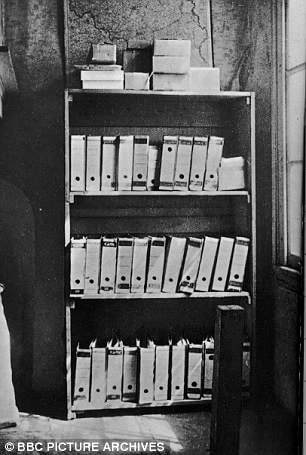 Since the end of World War II, at least five people have come under suspicion for betraying the hiding place at Amsterdam 263 Prinsengracht. Despite official investigations and biographers' theories, there is no convincing proof of a culprit.
Since the end of World War II, at least five people have come under suspicion for betraying the hiding place at Amsterdam 263 Prinsengracht. Despite official investigations and biographers' theories, there is no convincing proof of a culprit.The new research isn't solid proof either, but it opens the possibility that investigators stumbled upon Anne Frank by chance.
Anne, her sister Margot and their parents, Otto and Edith were caught August 4, 1944 along with four other Jews hiding with them.
The bookcase pictured here had been constructed to camouflage entry into a part of the building out of view from the street.
Of the eight Jewish people seized, only Otto Frank survived the concentration camps. Anne died of typhus at age 15 at Bergen-Belsen in Germany.
In 2015, researchers at the Anne Frank House gathered evidence that Anne and Margot died a month earlier than previously believed, in February 1945, rather than late March of that year.
Anne Frank House researcher Erika Prins told the Guardian: “When you say they died at the end of March, it gives you a feeling that they died just before liberation [April 15, 1945]. So maybe if they’d lived two more weeks …” Prins said, her voice trailing off. “Well, that’s not true any more.”
Below: After liberation, female German camp guards are forced to unload a truck full of bodies of dead prisoners at Bergen-Belsen, April 1945. George Rodger—The LIFE Picture Collection/Getty Images.
 The earlier March 31 date of Anne’s death was set by Dutch authorities after the war when they did not have the resources to establish an exact date. The new evidence includes statements from a friend who saw Anne in Bergen-Belsen and remembered the Frank sisters showing signs of typhus in early February. Dutch health authorities say typhus deaths happen around 12 days after the first symptoms.
The earlier March 31 date of Anne’s death was set by Dutch authorities after the war when they did not have the resources to establish an exact date. The new evidence includes statements from a friend who saw Anne in Bergen-Belsen and remembered the Frank sisters showing signs of typhus in early February. Dutch health authorities say typhus deaths happen around 12 days after the first symptoms.“In view of this, the date of their death is more likely to be sometime in February. The exact date is unknown,” the researchers said .
In the words of Bergen-Belsen survivor Rachel van Amerongen, "One day they simply weren’t there any more."
Seven decades after her death, Anne Frank stands as an example of resistance and courage in the face of inhuman cruelty and persecution.
To view a short video showing friends talking about seeing Anne in Bergen-Belsen, click here...
Published on January 22, 2018 11:08
January 15, 2018
Cornelia Fort: Bold Choices, No Regrets.
 Cornelia Fort was born to wealth and
Cornelia Fort was born to wealth andprivilege, but in a time and place that prescribed her a very narrow role in life. Yet she made bold choices push boundaries and lived of life of daring and adventure few women would even dream of.
Would she have made the same choices, if she'd known it would lead to hear at 24?
Growing up in a luxurious mansion built in 1815 on the banks of the Cumberland River in Tennessee, she was expected to become a Southern debutante, attend society functions, marry and have children.
At eighteen, Cornelia wanted to attend Sarah Lawrence College where young women could design their own course of study. Her father at first refused to allow her to apply to that "liberal northern school" and she was sent to Ogontz School for Young Ladies.
In her first major rebellion against the "proper" role assigned to her, Cornelia got her mother to help change her father's mind. She was finally allowed to leave the "oppressive atmosphere" and transfer to Sarah Lawrence, where she graduated with a two-year degree.
Cornelia's next bold move challenging the strictures of women's lives in the 1940s,
set her on a course leading to the skies over Pearl Harbor
at the very hour
the Japanese attacked.
 At age five, with her father and three older brothers, Cornelia saw a daring pilot perform acrobatics in the sky.
At age five, with her father and three older brothers, Cornelia saw a daring pilot perform acrobatics in the sky.It appeared so dangerous, Dr. Rufus Fort made his sons promise ( as one story goes, swear an oath on the family bible) they would never fly.
Later, when Cornelia made her first solo flight, one brother chided her for breaking a promise to their father. But Dr. Fort had not thought to ask his daughter not to fly.
She was hooked from her very first time in the sky, saying “It gets under your skin, deep down inside.”
Cornelia Fort became the first female flying instructor in all of Tennessee in 1940. The next year she got a job in Hawaii teaching defense workers, soldiers and sailors to fly.
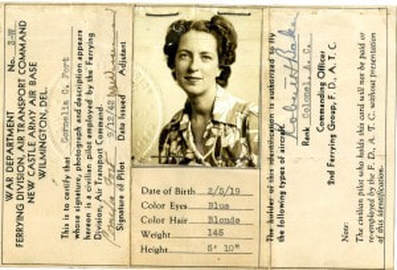 In November 1941, Cornelia wrote home (her father had died more than year before).
"If I leave here, I will leave the best job that I can have (unless the national emergency creates a still better one), a very pleasant atmosphere, a good salary, but far the best of all are the planes I fly. Big and fast and better suited for advanced flying.
In November 1941, Cornelia wrote home (her father had died more than year before).
"If I leave here, I will leave the best job that I can have (unless the national emergency creates a still better one), a very pleasant atmosphere, a good salary, but far the best of all are the planes I fly. Big and fast and better suited for advanced flying.
On December 7, 1941, she was in the sky with a student pilot when a small plane nearly collided with them. Cornelia grabbed the controls and saved their lives.
Later, she said the plane “passed so close under us that our celluloid windows rattled violently and I looked down to see what kind of plane it was. The painted red balls on the tops of the wings shone brightly in the sun. I looked again with complete and utter disbelief. Honolulu was familiar with the emblem of the Rising Sun on passenger ships but not on airplanes.”
“Then I looked way up and saw the formations of silver bombers riding in. Something detached itself from an airplane and came glistening down. My eyes followed it down, down, and even with knowledge pounding in my mind, my heart turned convulsively when the bomb exploded in the middle of the harbor. I knew the air was not the place for my little baby airplane and I set about landing as quickly as ever I could. A few seconds later a shadow passed over me, and simultaneously bullets spattered all around me.”
See below the entry in Cornelia's logbook for that flight
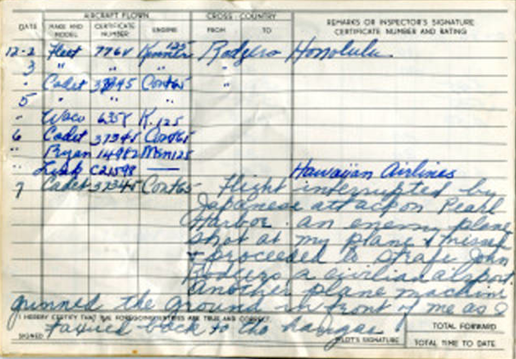 “Later, we counted anxiously as our little civilian planes came flying home to roost. Two never came back. They were washed ashore weeks later on the windward side of the island, bullet-riddled. Not a pretty way for the brave yellow Cubs and their pilots to go down to death.”
“Later, we counted anxiously as our little civilian planes came flying home to roost. Two never came back. They were washed ashore weeks later on the windward side of the island, bullet-riddled. Not a pretty way for the brave yellow Cubs and their pilots to go down to death.”
Cornelia survived. And then stepped out of bounds again.
She knew the risks when she became one of the first to volunteer for Women’s Auxiliary Ferrying Squad (WAFS) “I felt I could be doing something more constructive for my country than knitting socks. Better to go to war than lose the things that make life worth living.”
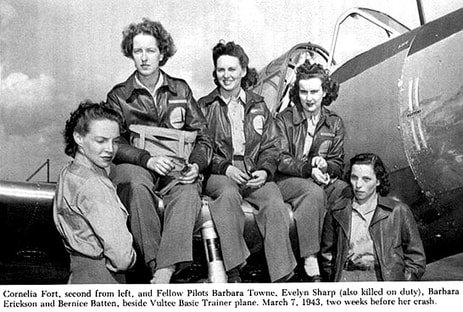 “Because there were so many disbelievers in women pilots, especially in their place in the army....We had to deliver the goods or else. Or else there wouldn’t ever be another chance for women pilots in any part of the service.”
“Because there were so many disbelievers in women pilots, especially in their place in the army....We had to deliver the goods or else. Or else there wouldn’t ever be another chance for women pilots in any part of the service.”
The WAFS ferried planes for the U.S. military during WWII, flying them from factories to points of embarkation. The group later merged with the
Women Airforce Service Pilots (WASP).
The women pilots faced painful prejudice from some of the male pilots, who Cornelia said went " to great lengths to discredit them whenever possible.”
The end came quickly, and far to soon. March 21, 1943, flying over Texas in a six-plane formation, Cornelia's Fort's wing tip was clipped by another plane. She crashed to the ground and died instantly.
Cornelia was twenty-four, and became the first female pilot in American history to die in the line of duty, though the WAFS were not recognized as official military service members 1977.
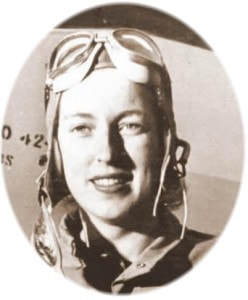 A year prior to her death, Cornelia had written her mother, poetically describing how much she had loved life, loved green pastures and cities,
A year prior to her death, Cornelia had written her mother, poetically describing how much she had loved life, loved green pastures and cities,sunshine on the plains and rain in the mountains, blue jeans, red wine, books, music and the kindness of friends. She wrote:
If I die violently, who can say it was "before my time"? I should have dearly loved to have had a husband and children. My talents in that line would have been pretty good but if that was not to be, I want no one to grieve for me.
I was happiest in the sky--at dawn when the quietness of the air was like a caress, when the noon sun beat down and at dusk when the sky was drenched with the fading light. Think of me there and remember me...Love, Cornelia.
Cornelia's story reminds me we do not have time to be mired in self-doubt and regret. We make the best decisions we can without the benefit of knowing how they will unfold. Like Cornelia, I want to choose boldly and love life hugely. What about you?
Published on January 15, 2018 13:20
January 10, 2018
It's High Time Carmellita's Story Gets Out
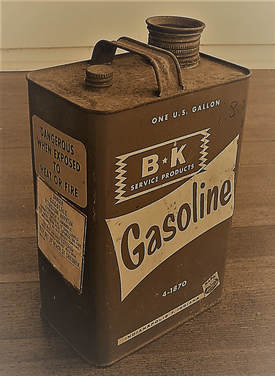 When you hear the call: "
Build the wall"
When you hear the call: "
Build the wall"
take a moment and tell someone about
Carmellita Torres.
This 17-year-old girl sparked a protest on the Juarez/El Paso border in 1917 when customs officials ordered her to undress and submit to being doused with gasoline.
The kind of guys in charge back then were the same kind of guys we have in charge now. So, unfortunately, Carmellita's
courageous action did not bring change.
But women's voices are being heard today, in way they never have been before. Carmellita Torres freely crossed the border from Mexico almost every day to work as a maid for an American family. She wasn't alone.
Farmers and ranchers in the Southwest were completely dependent on Mexican labor. White families in El Paso could easily afford the wages they paid Mexican girls and women to do their cleaning and laundry.
So many Mexicans from Juarez came to El Paso every day for work that a trolley was set up for them to ride across the Santa Fe Bridge between the two cities.

 But El Paso Mayor Tom Lea, Jr. feared Carmellita and the other workers, whom he called
"dirty, lousy, destitute,"
would carry lice and cause a typhus epidemic in his city.
But El Paso Mayor Tom Lea, Jr. feared Carmellita and the other workers, whom he called
"dirty, lousy, destitute,"
would carry lice and cause a typhus epidemic in his city.Rates of typhus infection were no higher in El Paso, than they were in other large American cities. But in January 1917, Mexicans were suddenly required to show a certificate to cross the border, a certificate indicating that "the bearer, ___ has been this day deloused, bathed, vaccinated, clothing and baggage disinfected.”
Carmellita and the others were forced to strip nude for inspection, bathe, and be drenched in gasoline to kill any lice that might be on their bodies. Their clothing and shoes were fumigated and put through a steam dryer.
The women were subjected to lewd comments and there were rumors that nude photographs of them were showing up in nearby bars.
Sunday morning, January 28th, 1917, Carmellita reached the end of her trolley ride and was told to get off, take a bath and be
disinfected. She refused.
Carmellita convinced thirty other women on the trolley to refuse as well. By 8AM the crowd of protesters, mostly servant girls, grew to 200 and packed half the bridge. Some of the women stopped the trolley by laying down on
the tracks. By noon some 2000 people stood with Carmellita.

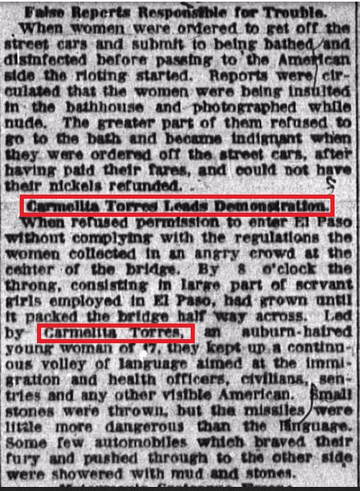 Both Mexican and American soldiers showed up to subdue the crowd, and Monday morning it was back to fumigation as usual.
Both Mexican and American soldiers showed up to subdue the crowd, and Monday morning it was back to fumigation as usual. There's little trace of Carmellita Torres in the pages of history. She's named in the newspaper for leading what came to be called
"the bath house riots," and we know that she and eight other women were arrested and went to jail for "inciting riot" that day.
Their stories may have been passed down the years orally, but the white men writing the newspapers and making the rules
preserved a different story.
The reporter for the El Paso Morning Times wrote that once
Mexicans got familiar with the bathing process, they would welcome it. He said the Mexicans
" came out [of the bath house] with clothes wrinkled from the steam sterilizer, hair wet and faces shining, generally laughing and in good humor."
Raul Delgado, a man who went through the "cleansing" gave his description decades later. “An immigration agent with a fumigation pump would spray our whole body with insecticide, especially our rear and our partes nobles. Some of us ran away from the spray and began to cough. Some even vomited from the stench of those chemical pesticides…the agent would laugh at the grimacing faces we would make. He had a gas mask on, but we didn’t."

 Bracero workers, hired for seasonal farm work, are sprayed with DDT after crossing the U.S.-Mexico border in 1956. (Smithsonian Institution) The risk of typhus has been used by both American and German leaders to whip up fear and prejudice against a segment of the population they wanted to deem inferior.
Bracero workers, hired for seasonal farm work, are sprayed with DDT after crossing the U.S.-Mexico border in 1956. (Smithsonian Institution) The risk of typhus has been used by both American and German leaders to whip up fear and prejudice against a segment of the population they wanted to deem inferior.The notion that Mexicans crossing into the U.S. for work each day would carry lice and cause a typhus epidemic, was used as an excuse to spray them with toxic chemicals. Men, women and children crossing the Juarez/El Paso border were doused or sprayed with chemicals like gasoline and DDT for more than 40-years.
In Poland, the Nazis posted placards around Warsaw in 1940 declaring that Jewish people were infested with lice and carrying typhus. To protect the rest of the populace all Jews were required to move into a small section of the city that became the Warsaw Ghetto.
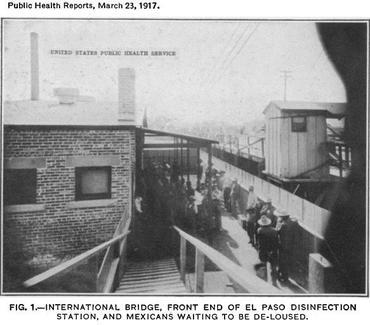 Author David Dorado Romo heard stories of fumigation from his aunt who had experienced it. When he started researching the subject at the National Archives, he discovered there was a lot more to the story and wrote about it in his book Ringside Seat to a Revolution: An Underground Cultural History of El Paso and Juarez, 1893-1923.
Author David Dorado Romo heard stories of fumigation from his aunt who had experienced it. When he started researching the subject at the National Archives, he discovered there was a lot more to the story and wrote about it in his book Ringside Seat to a Revolution: An Underground Cultural History of El Paso and Juarez, 1893-1923."These records point to the connection between the U.S. Customs disinfection facilities in El Paso-Juárez in the 20s and the
Desinfektionskammern (disinfection chambers) in Nazi Germany...."
I discovered an article written in a German scientific journal written in 1938, which specifically praised the El Paso method of fumigating Mexican immigrants with Zyklon B," writes Romo.
In 1939, the Nazis started using Zyklon B to fumigate people at border crossings and concentration camps. Later, they used Zyklon B pellets in the gas chambers at Auschwitz and other camps, not to kill lice, but people.
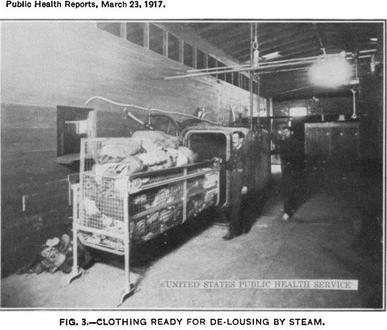 In 1917, after Carmellita's protest, the US/Mexican border was closed for the first time, customs officials
In 1917, after Carmellita's protest, the US/Mexican border was closed for the first time, customs officialsprohibiting anyone from crossing without authorization. That is, without the required fumigation of their clothing, shoes and body.
That year alone, 127,000 people suffered humiliation and were doused with toxic disinfectant at the El Paso end of the Santa Fe Bridge. This federal policy would promulgate a stereotypical negative view of Mexicans and their American descendants for decades to come.
U.S. Public Health Service photos thanks to https://elpasogasbaths.weebly.com/
Published on January 10, 2018 10:35



